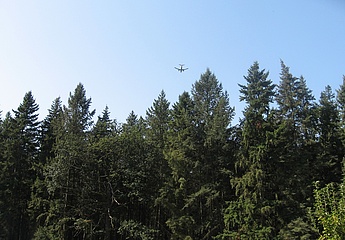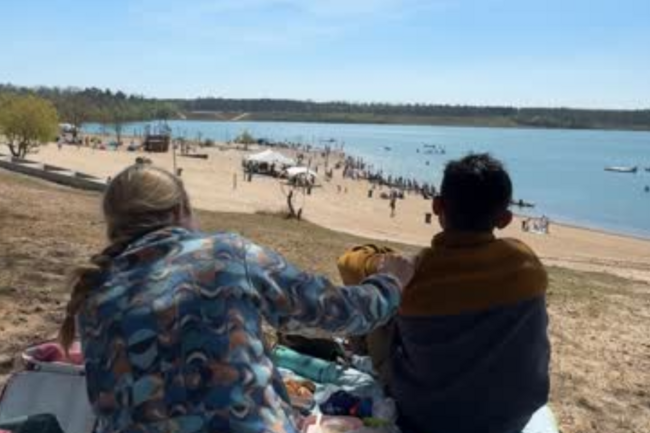Our city forest, Frankfurt's green lung, is beautiful and a popular destination. But unfortunately our forest is doing badly. Very badly indeed. The past dry years have taken their toll on Frankfurt's city forest. Tens of thousands of trees have died and whole areas of forest lie fallow. This is not a pretty sight and is also extremely worrying for our urban climate. Particularly affected are the forest areas on dry sandy soils in the Schwanheim and Goldstein districts. This is now to be counteracted with a large tree planting campaign.
"Nowhere in Frankfurt is climate change more evident than in the city forest. The lack of rain, the dry summers and as a result the pests are destroying our forest at a rapid pace. We are trying to counteract this with tree species and our own seedlings that are better able to withstand periods of drought and heat, explains Rosemarie Heilig, head of the Department of the Environment, at the start of the planting on Tuesday, 9 March, in the Schwanheim city forest. In the course of the coming weeks, a total of 105,100 young trees will be planted on the bare areas in the Schwanheim and Goldstein forests by the Parks Department.
"The young sessile oak trees come from our own breeding. Our forestry collected acorns in autumn and grew them. The advantage of our own cultivation is that these young trees are usually already well adapted to the soil or water conditions on site. This makes it easier for them to grow. In addition to sessile oak, other drought-resistant native species such as littleleaf linden, sweet chestnut, service tree, rowan, downy oak and Turkey oak are planted, as well as a few black pines and fluttering elms. "The Frankfurt city forest is a diverse mixed deciduous forest. It will remain so. Only in this way is it resilient and gets a chance to defy climate change," says Heilig.
Before the planting, the area was prepared: A specially converted excavator pushed a dense layer of undecomposed pine needles and grass felt off the surface and made planting trenches. These are to help the new trees to grow. This is because the almost impermeable layer of needles and grass would have prevented the deeper penetration of precipitation and thus made it impossible to supply the young plants with water. In the course of these measures, the late blossoming weeping cherry, which originates from North America, was also removed. This invasive and hardy tree species would prevent reforestation by the seeds of native tree species.
Before planting, the area was prepared: A specially converted excavator pushed a dense layer of undecomposed pine needles and grass felt off the surface and made planting trenches. These are to help the new trees to grow. This is because the almost water-impermeable layer of needles and grass would have prevented the deeper penetration of precipitation and thus made it impossible to supply the young plants with water. In the course of these measures, the late blossoming weeping cherry, which originates from North America, was also removed. This invasive and very hardy tree species would prevent reforestation by the seeds of native tree species.
In order to protect the newly planted trees from wild browsing, construction of a protective fence has already begun.












